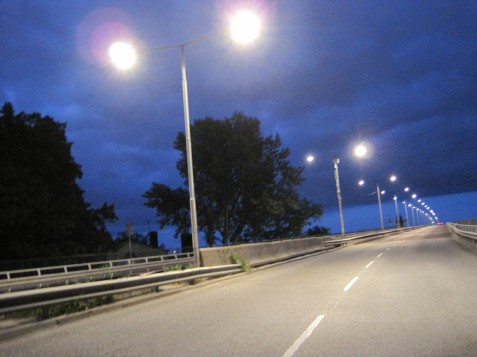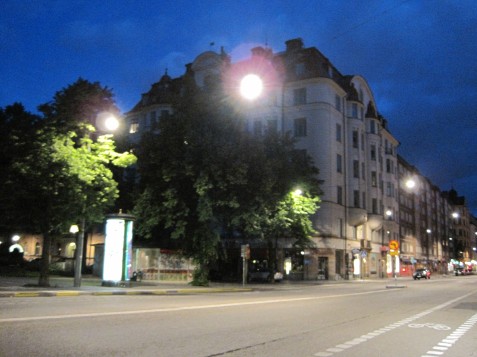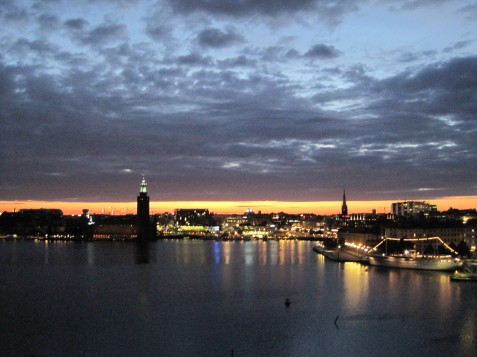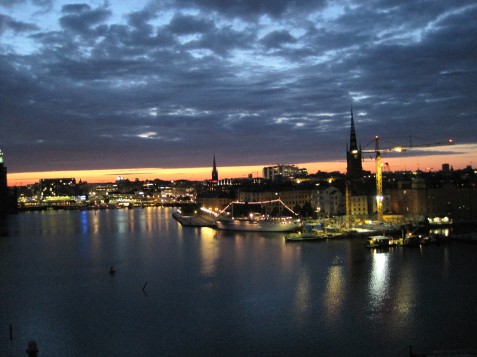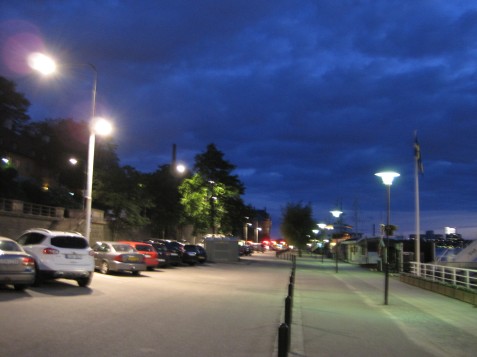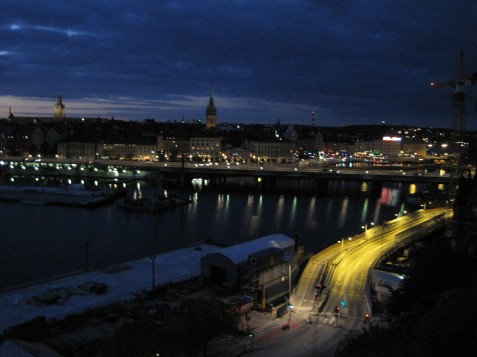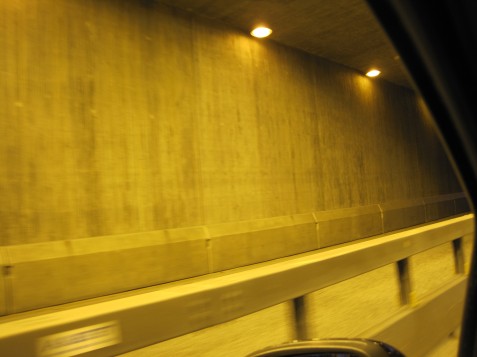Back to researching & blogging after a month of well needed rest…
The EU incandescent ban
The first phase of the absurd incandescent ban has now taken effect.
* As of this month it is now illegal to produce and import 100W incandescent bulbs and frosted incandescent bulbs. And frosted Halogen Energy Savers!
(Selling already existing stocks is still permitted.)
The regulation also includes requirements for new product information on the packaging for all lamps (which I think is a good thing that should have been required long ago).
Manufacturers support this phase-out. “We are very positive”, says Magnus Frantzell, CEO of the Swedish Lighting Manufacturers Association to Expressen. Well, what a surprise…
But it will not stop here. This is the full schedule:
* 1 September 2010: clear 75W (over 750 lumen) lamps will be banned (through minimum efficiency requirements).
* 1 September 2011: clear 60W (over 450 lm) lamps will be banned.
* 1 September 2012: clear 7W-40W (over 60 lm) lamps will be banned.
* 1 September 2013: tightened standards on CFLs and LEDs. No lamp type will be removed from the market, only lamps with poor performance. Possibly non-dimmalbe lamps will be banned.
* 2014: Review of the regulations by the EU Commission.
* 1 September 2016: tightened standards for clear halogen lamps. Only energy class B halogen lamps (C for some special cap lamps) will be permitted, which currently only the super-expensive IR halogen lamps with integrated transformer reaches. All other halogen lamps will be banned! [1]
Exceptions: “special-purpose lamps designed essentially for applications such as traffic signals, terrarium lighting and household appliances and clearly indicated as such on accompanying product information are not subject to these eco-design requirements.” Examples of special-purpose lamps: aquariums & terrarium lamps; germicidal lamps, lamps for display/optics; stage, studio, TV & theatre lamps; photo flash lamps; projection lamps, IR lamps; traffic signal lamps for roads, trains & aviation; car headlight lamps; oven & fridge lamps; temperarture- & shock-proof lamps; mirror lamps. [2]
Street, office & industry lighting
Somehow, without any public debate whatsoever, it seems that the EU Commission has also just snuck through a regulation on office, industry and street lighting. [4, 5]
* 2010: Phase out of T8 halophosphate fluorescent tubes (through minimum efficiency requirements).
My comment: This is good as they are not very efficient, contain more mercury, often flicker due to old type magnetic ballasts and the poor-colour-rendering light truly sucks. Should have been phased out decades ago.
* 2012: Phase out of T12 fluorescent (FL) tubes.
My comment: This is probably good too, although it will require many businesses to purchase new fixtures for the thinner, more efficient tubes with HF-ballasts.
* 2012: Phase out of high-pressure sodium (HPS) standard quality lamps (only E27/ E40/ PGZ12 affected).
My comment: This is acceptable as long as there are better quality lamps of the same type available. Not acceptable if it includes the decorative frosted incandescent-like lamps used in parks and Old Town-environments across Europe. These are somewhat less efficient but are needed for sensitive environments. Quality vs quantity. It cannot all be about quantity of light, we also need quality of life.
* 2012: Phase out of less efficient metal halide (MH) lamps (only E27/E40/PGZ12 affected).
My comment: Again fine, if there are better lamps of the same type still available.
* 2014: Review of the regulations by the EU Commission.
* 2015: Phase out of High-Pressure Mercury (HPM) lamps.
My comment: Excellent! Should have been banned decades ago, as soon as there were HPS or MH replacement lamps available for the same lumnaires. HPM lamps are most commonly used as street lights in cities. They give a truly horrid purple-white light which tends to turn green with age, contain more mercury than other lamps and are markedly less efficient than HPS, MH and CMH lamps.
The new warm-white Ceramic Metal Halide (CMH) are about twice as efficient and give a very incandescent-like light: truly great for street & park lighting.
* 2015: Phase out of plug-in/retrofit high-pressure sodium lamps (= direct replacement for HPM). Plug-in lamps must correspond to Super/Plus HPS level; almost all plug-in/retrofit lamps will be banned.
* 2017: Phase out of Poor performing metal halide (MH) lamps: (only E27/E40/PGZ12 affected).
My comment: Seems that the EU consultants and Commission are hell-bent on removing any light from the market that is remotely attractive and human-friendly. Warm-white MH lamps, and improved colour HPS lamps are the most incandescent-like alternatives after halogen. Phasing out these lamps may mean that there will be no frosted HID lamps left on the market, despite their usefulness commercially indoors. The Eco-design group does not care how the lamp is used, light quantity at all cost is their only goal.
It also means that every EU country will be forced to replace the whole street luminaire when stocks of replacement lamps run out. This will be good for the environment but may be more costly than some countries or counties can afford. Why not instead give special EU grants or other incentives to those who install the most energy efficient technology available, instead of removing whole lamp groups from the market??
Reflector lamps
As mentioned earlier in this blog, reflector lamps is the next group up for slaughter. [6] Preparation is going on currently and decision will be taken next year.
Halogen replacement bulbs for spotlights, floodlights and downlighters are at high risk of being recommended for phase-out, making millions of expensive desklights, spotlights and recessed luminaires useless as there are no CFL or LED alternatives for these tiny bulbs or tubes. Great for the luminaire market but not so great for the individual home owner who may have invested a gread deal of money into installing recessed fixtures etc.
Professional lighting designers despair at the thought, as should many galleries, shops, restaurants, hotels etc. as they will then no longer be able to create the uniquely luxurious and attractive lighting environments for their customers, made possible only with halogen spots.
If the lobbyists that keep pressuring the EU Commission into such follies have their way, we will be facing a very cold, dull and drab lighting future.
The logical thing to do would be to ban only the poorest performing lamps in each lamp group, since each lamp type has its own unique qualities that oftan cannot be replaced by another lamp type (the only exception being HPM lamps for which replacement with HPS, MH or CMH is an improvement both quality- and quanlity-wise).
* As no other lamps can replace small halogen bulbs for reflector lamps, neither quality-wise or size-wise, only the poorest performing in this class should be banned, not the whole group.
* As frosted incandescent lamps cannot quality-wise be replaced by anything but frosted halogen lamps, the ban on the latter should be lifted.
1. New EU directive: Say goodbye to the light bulb (Osram summary)
2. EuP Directive About Non Directional Domestic Lighting (detailed slide show)
3. EU directive – special purpose lighting (Osram summary)
4. EU directive – street, office and industry lighting (Osram summary)
5. Commission Regulation (EC) No 245/2009 of 18 March 2009 (original document)
6. Spotlight and downlighter bulbs next to be banned by EU
